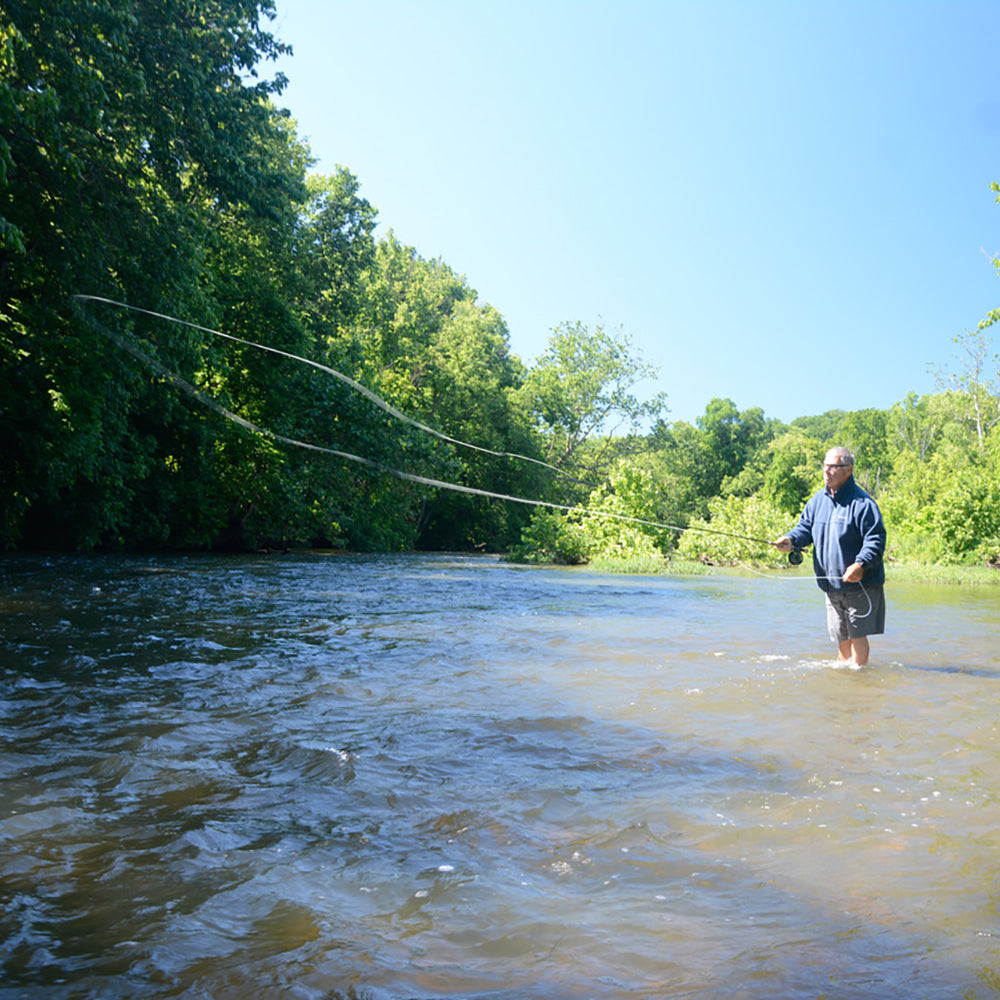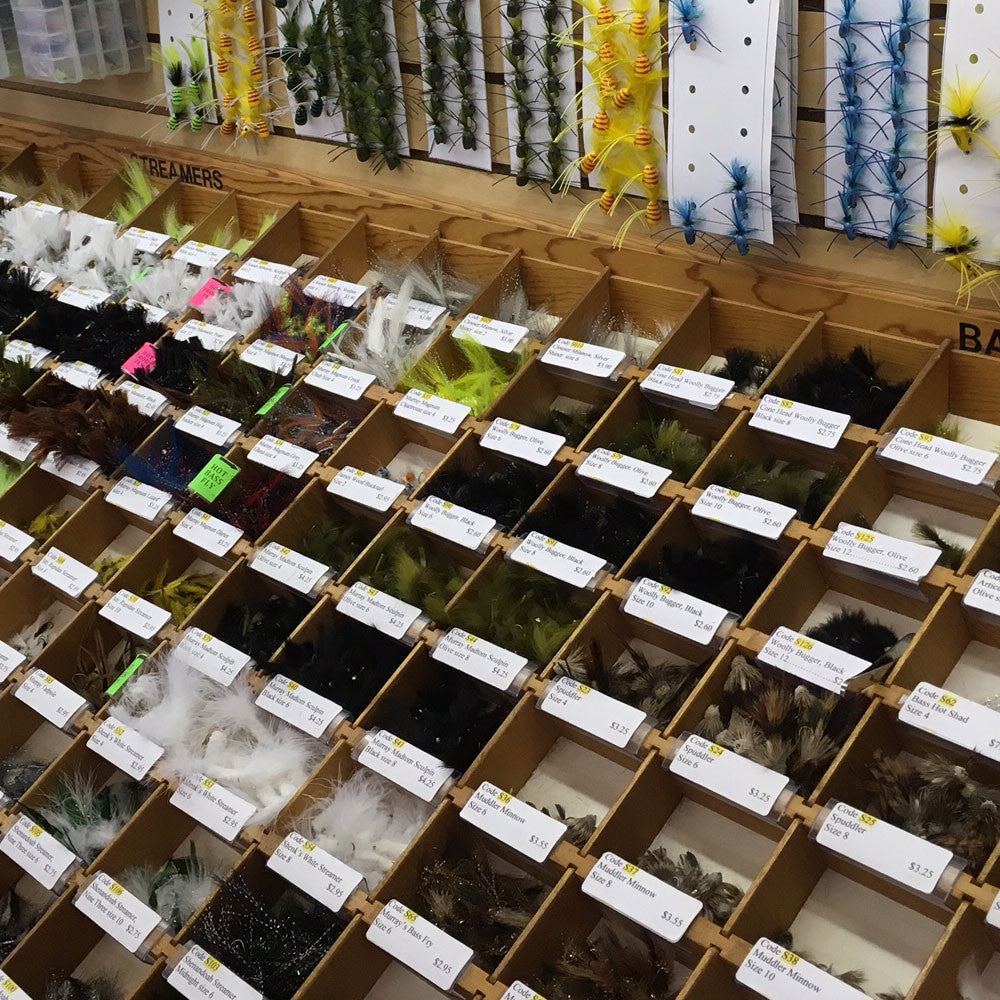Fishing Crayfish for Smallmouth Bass

Studies have shown that crayfish rank very high on the food list of smallmouth bass. I have never questioned this since some of this work was conducted by very knowledgeable professionals, one of whom was Ben Schley, a good friend and first class angler. However, many years ago I had a real eye-opener on this point. I was fishing along a good smallmouth river and came upon two fellows seining bait in shallow water. Just to make conversation, and to see how much of the various foods were available, I stopped and talked to them a while. They were seining for crayfish and easily catching a fair number. It turned out that they were camped close by and had been fishing here for several days.
Upon their insistence I followed them to their camper to see some of the "big fish" they had caught on crayfish. How many times have you heard that story? When they popped the lid on their ice chest I could hardly believe my eyes. They had more big bass there than I had caught in the whole season.
Crayfish make their homes in tunnel-like dens on the stream bottom under large rocks and logs, and along the edges of aquatic grassbeds. In most cases they do not like very deep water. Like the leech, the crayfish is most active in low-light situations, coming out of its den to feed late in the evening and at night.
Under normal conditions crayfish crawl forward over the stream bottom, but when they find themselves in danger--such as being pursued by a bass--they flee backwards. Using their powerful tails like flippers, they swim with a fast, darting action from one area of cover to the next. Since we are trying to "duplicate nature" these last three characteristics say a lot about when, where and how to fish crayfish flies.

Image with text
Several years ago my son Jeff and I were fishing a large smallmouth river. I came to the take-out spot beside our Jeep about dusk 15 minutes before Jeff. It was a beautiful evening so I sat on a chair-size boulder in water two feet deep to wait for him. I detected movement along the stream bottom around my boulder. Closer scrutiny revealed several dozen crayfish scurrying along the stream bottom. After this I began fishing crayfish flies much more, especially at dawn, dusk and on heavily overcast days.
A very effective tactic is to wade or float down the river 50 feet from the bank where the water along the bank is 2 to 4 feet deep over a cobblestone stream bottom. Cast the crayfish in close to the bank and after it sinks close to the stream bottom swim it out slowly by stripping it 4 inches every 5 seconds until you have retrieved it 20 feet from the bank. As you work your way down the river make each successive cast 5 feet further downstream and strip it out in the same way.
Put your Crayfish in front of the Bass
When the river is flowing at a moderate rate a 9 foot 2X Bright Butt Knotted Leader does a good job on this type fishing. However, if the current is moving at a fast pace a Scientific Anglers Sink Tip III Line with a Murray's Sinking Fluorocarbon 6ft 2X Leader will help you catch more bass.
Frequently the tails of the pools, especially on the North and South Forks of the Shenandoah River, have cobblestone stream bottoms which reach from the riffles upstream over 100 feet into the main pool. I like to wade these areas so I do not scare the fish. So, if I'm floating in a canoe I beach it well upstream so I can fish the whole area thoroughly. Here I wade slowly downstream and cast my Murray's Crayfish across stream. After it sinks deeply I swim it back across the stream bottom by stripping it 4 inches ever 5 seconds. I use this same retrieve as I wade and fish slowly down to the riffle. This method is so effective that I often devote more than an hour to fish each pool tail.
Fishing crayfish flies is effective on many bass rivers but it is especially effective on both the North and South Forks of the Shenandoah River. On the North Fork of the Shenandoah River the section from Mount Jackson downstream through Edinburg to Toms Brook is very productive with many good access points for wading. On the South Fork of the Shenandoah River the water from Luray downstream to Seekfords Landing is great for floating and wading. Many of these access points are shown in my book Virginia Blue Ribbon Streams.

Crayfish Patterns
For the last several years I've been testing various ways to tie crayfish which will help us catch more large bass. Last summer my guide, Dale, was teaching one of our students how to fish the pattern we started calling the Murray's Crayfish and he got into a smallmouth bass well over 5 pounds. After this we all started using this fly much more. In fact, it became our number one fly in both our smallmouth bass schools and guide trips.
After fishing a crayfish pattern in the ways I've discussed I believe you will see why this was the fly Ben Schley rated as his favorite fly.
-

Learn Fly Fishing at Murray’s Fly Shop: Classes, Workshops & Schools
Welcome to Murray’s Fly Shop – Your Fly Fishing Learning Hub At...
-

Featured Flies of the Month
Harry Murray's recommended fly list for this time of the year. (January...



